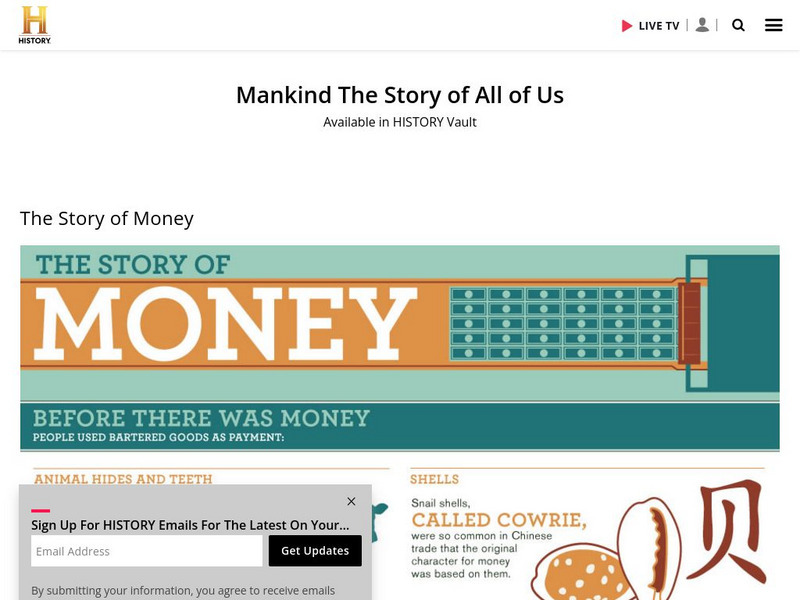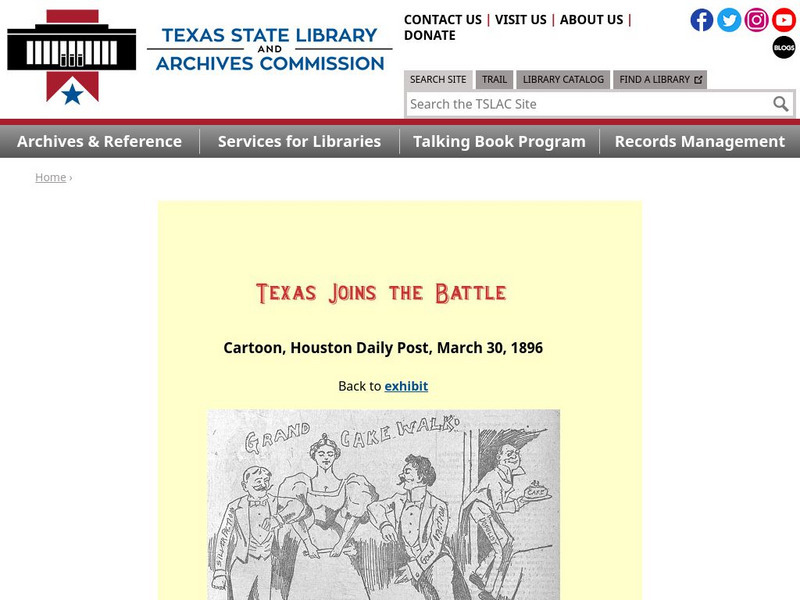A&E Television
History.com: Infographics: The Story of Money
Get the facts on the earliest forms of money and the origins of the U.S dollar, discover which country created the first paper money, and find out how the Inca built a great empire without using money.
Curated OER
Smithsonian: What Is Currency? Lessons From Hist. Africa
From the Smithsonian, this site offers lessons and resources on currency, its use (in the form of gold dust, salt, or metal objects) as an instrument of trade in historic Africa, and its requirements as an instrument of trade in the...
Texas State Library and Archives Commission
Texas State Library and Archives Commission: Texas Joins the Battle: Cartoon, Houston Daily Post, March 30, 1896
Here is a political cartoon showing showing the split between those who favored the gold standard and those favoring the silver standard, and how the Populist Party took advantage of that split. Learn what this means by taking a look at...
Curated OER
Educational Technology Clearinghouse: Clip Art Etc: Fasces
Rods bound in the form of a bundle, and containing an axe in the middle, the iron of which projected from them. These rods were carried by lictors before the superior magistrates at Rome, and are often represented on the reverse of...
Curated OER
Educational Technology Clearinghouse: Clip Art Etc: Puteal
Puteal, properly means the enclosure surrounding the opening of a well, to protect persons from falling into it. It was either round or square, and seems usually to have been of the height of three or four feet from the ground. It was...
Curated OER
Educational Technology Clearinghouse: Clip Art Etc: As
The unit of value in the Roman and old Italian coinages, was made of copper, or of the mixed metal called Aes. It was originally of the weight of a pound of twelve ounces whence it was called as libralis and aes grave. The oldest form of...
Curated OER
Educational Technology Clearinghouse: Clip Art Etc: As
The unit of value in the Roman and old Italian coinages, was made of copper, or of the mixed metal called Aes. It was originally of the weight of a pound of twelve ounces whence it was called as libralis and aes grave. The oldest form of...
Curated OER
Educational Technology Clearinghouse: Clip Art Etc: Carpentum
A cart; also a two-wheeled carriage enclosed, and with an arched or sloping cover overhead. The carpentum was used to convey the Roman matrons in the public festal processions; and, as this was a high distinction, the privilege of riding...
Curated OER
Educational Technology Clearinghouse: Clip Art Etc: Gubernaculum
A rudder. Before the invention of the rudder, which Pliny ascribes to Tiphys, the pilot of the ship Argo, vessels were both propelled and guided by oars alone. This circumstance may account for the form of the ancient rudder, as well as...


